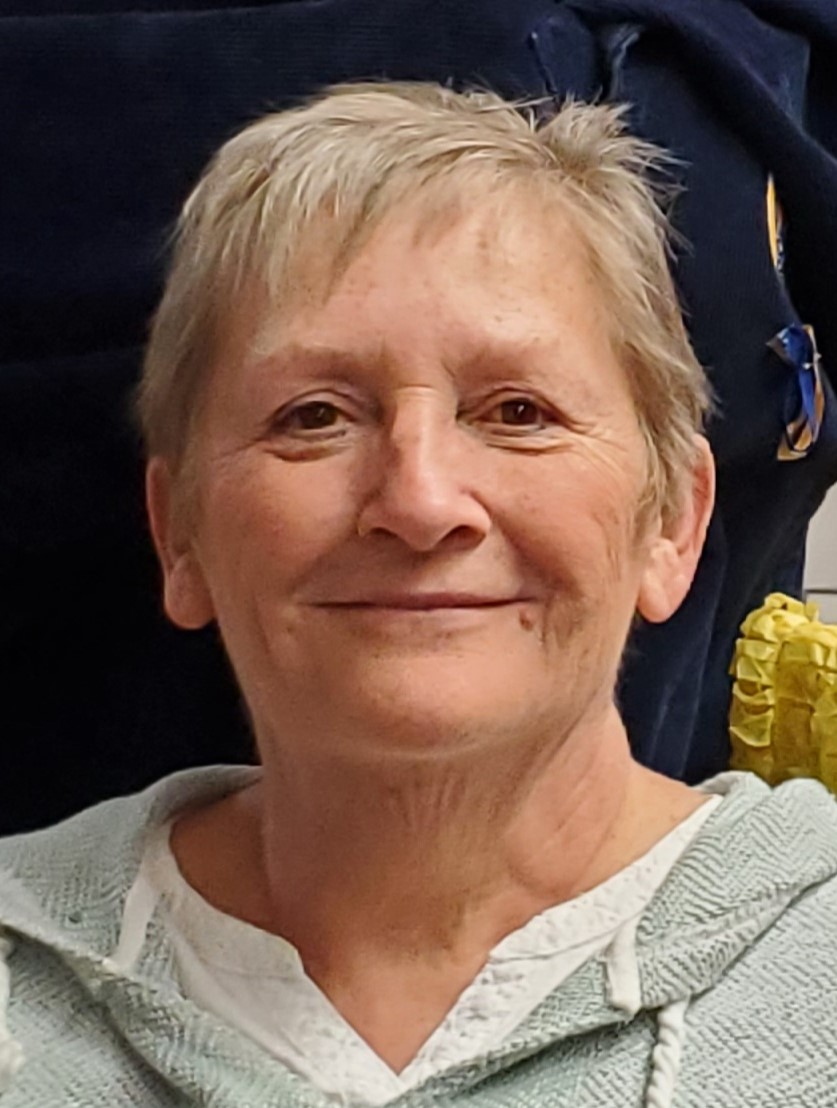
The Tremont House was built in 1846. Next year (2021) will be its 175th birthday! If you worked in the Tremont House (at Leonard’s Pharmacy, for instance) or have stories about the Tremont House, please let us know. We would like to collect as much as we can about this grand old building to help celebrate its 175 years of life.
Welcome to the Bellevue Historical Society's Tremont House. It is one of the oldest and most distinctive buildings in Bellevue. It was opened in 1846 by Loel and Samuel B. Chandler who operated a hotel on the second floor to serve stagecoach passengers traveling on the Western Reserve and Maumee Pike which today is U. S. Route 20. Its elegance in such a remote region must have been awe inspiring at the time. The three-story brick building featured Greek Revival architecture with six fluted columns on each floor. A belvedere on the roof topped off its classic lines. Named after a famous hotel in Boston, an early advertisement by the Chandlers boasted that the Tremont House was "as good a building as can be found in Northern Ohio." At the heart of the community of Bellevue, the Tremont House is the most prominent building in street scenes throughout the
town's history. It was listed on the National Register of Historic Places in 2006. The Society plans to return The Tremont House to its 1846 grandeur. It will become the home for the Society's vast collection of artifacts and pictures which tell the story of Bellevue's history.
Located at the intersection of North West Street and East Main Street, the Tremont House's location alone makes the site significant. In 1662, British King Charles II granted a Charter to the colony of Connecticut. This land became known as the Western Reserve. It extended 120 miles from Pennsylvania's western border to the line which is Bellevue's present day West Street. What an appropriate name! Of the vast Western Reserve, 500,000 acres of the western part were given by Connecticut as reimbursement to those Connecticut citizens whose property was burned by British soldiers during the Revolutionary War. They received approximately one acre of land for each dollar of loss by fire. Therefore, this region became known as the Firelands. This also accounts for the obvious New England influence in the area's architecture and culture. Present day West Street is the dividing line between Sandusky and Huron Counties.
Main Street, Route 20, was a part of the Western Reserve and Maumee Pike which was established in 1823 as the first east-west road from eastern Ohio to Toledo. Stage coaches regularly stopped at the Tremont House to allow passengers to rest and refresh themselves.
Tour of The Tremont House:
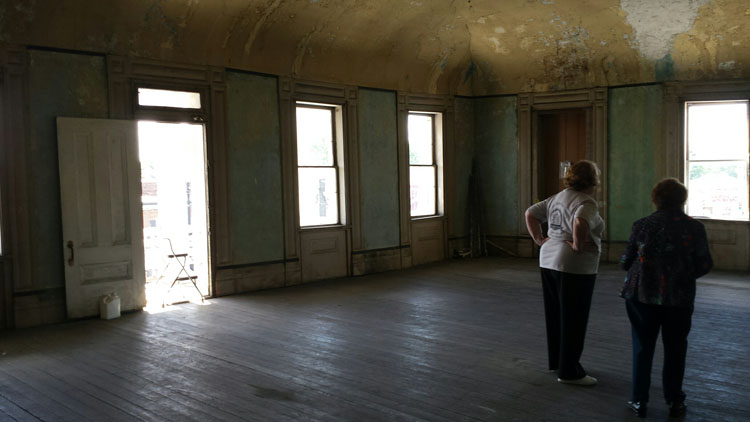 The ground floor has housed many mercantile establishments over the years including several groceries (among them A & P), a hardware store and the one most remembered by Bellevue natives, Leonard's Pharmacy, which occupied the space from the 1960's to the 1990's. Before 1900, the original six columns on this floor were removed and the front wall extended to directly below the front line of the second and third floor porches. The Society plans to move the front wall back to its original position and to reinstall the columns on the ground floor to match those on the upper floors. Last March, when the tin ceiling from the late 1800's was removed, there was evidence that there was originally a curved staircase in the center of the building from the first to the second floor. This was quite a discovery! There is also evidence that the building survived several fires in its early history. When the restoration of the building is finished, this floor will house a museum.
The ground floor has housed many mercantile establishments over the years including several groceries (among them A & P), a hardware store and the one most remembered by Bellevue natives, Leonard's Pharmacy, which occupied the space from the 1960's to the 1990's. Before 1900, the original six columns on this floor were removed and the front wall extended to directly below the front line of the second and third floor porches. The Society plans to move the front wall back to its original position and to reinstall the columns on the ground floor to match those on the upper floors. Last March, when the tin ceiling from the late 1800's was removed, there was evidence that there was originally a curved staircase in the center of the building from the first to the second floor. This was quite a discovery! There is also evidence that the building survived several fires in its early history. When the restoration of the building is finished, this floor will house a museum.
The steel stairway to the second floor was installed in 1933 as a fire safety measure.
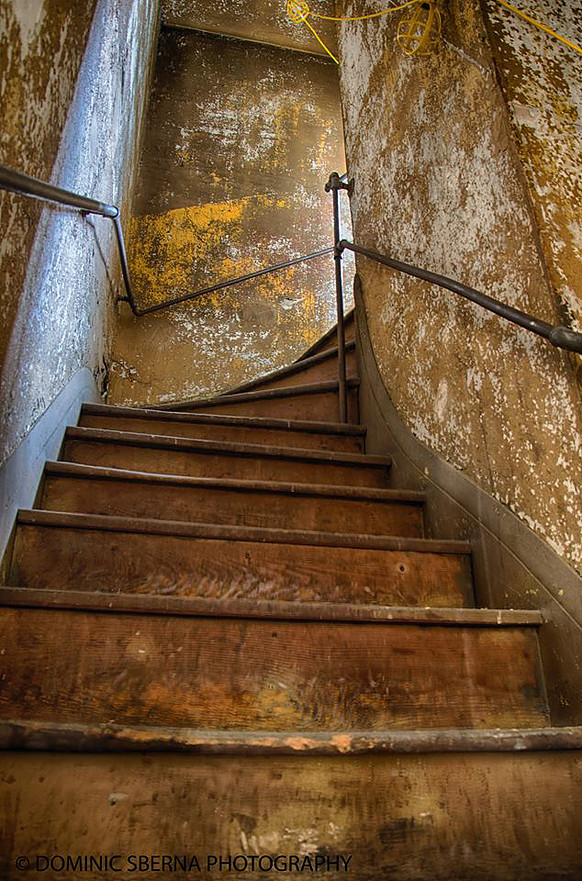 The second floor did not survive long as a hotel as railroad travel became much more popular, replacing stagecoaches. Other uses for the second floor rooms have been Burrow's cigar factory, a real estate office and an electrical engineer's office. Perhaps at one time there was a residential apartment on that floor as a full bathroom was installed. There is evidence on the porches that the original front façade may have been covered with stucco or some other enhancement over the brick. The original windows were small paned 6 over 6 windows with full working shutters on the outside that could be closed to shut out light and/or cold. The rooms were heated by stoves, first coal or wood, later gas. There were chimneys, no fireplaces. After the renovation, this floor will hold an office, storage room and some display space.
The second floor did not survive long as a hotel as railroad travel became much more popular, replacing stagecoaches. Other uses for the second floor rooms have been Burrow's cigar factory, a real estate office and an electrical engineer's office. Perhaps at one time there was a residential apartment on that floor as a full bathroom was installed. There is evidence on the porches that the original front façade may have been covered with stucco or some other enhancement over the brick. The original windows were small paned 6 over 6 windows with full working shutters on the outside that could be closed to shut out light and/or cold. The rooms were heated by stoves, first coal or wood, later gas. There were chimneys, no fireplaces. After the renovation, this floor will hold an office, storage room and some display space.
Looking out the front window of the second floor (or from the balcony), try to imagine how things would have looked in 1846 and in later years. Stagecoaches traveled Main Street in 1846 when most travel was still accomplished by horse. Across the street is the town square where many of the town's most important events took place. In 1884, hundreds gathered to watch the balloon "Queen City" ascend; in 1912, former President Theodore Roosevelt spoke at a rally as he campaigned again for that office; in 1914, all of the school children of the city gathered there, each waving a flag, to have their photo taken celebrating the 100th anniversary of " The Star Spangled Banner"; in 1953, the reviewing stand for the city's Centennial parade celebration was on the square with Mayor Homer Crecelius and Governor Lausche officiating; and in the 1970's the city's Cherry Festival took place on the square. The square was the scene of Victory Loan Drives in World War I and the site of the large Roll of Honor in World War II which listed all of the residents in Bellevue and the surrounding townships who were serving their country. The Square was the heart of the community.
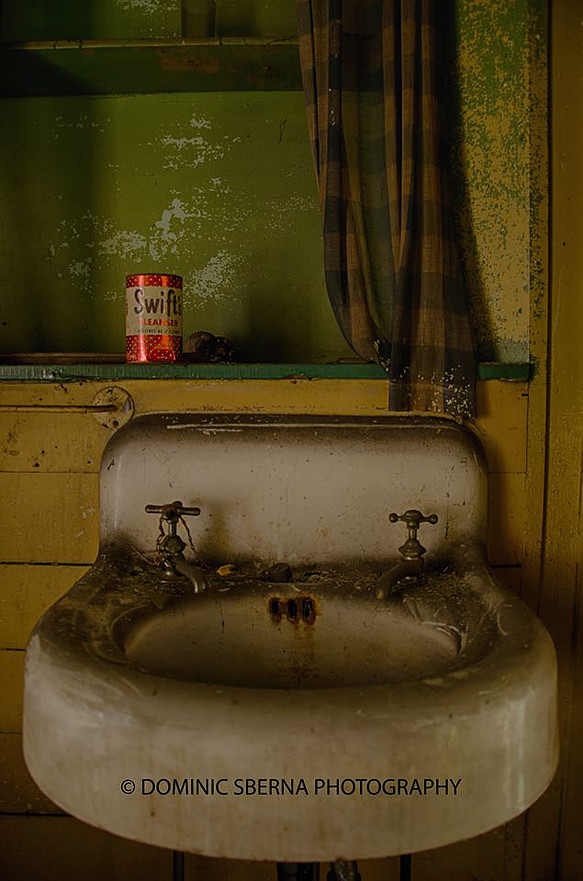 A prominent landmark on the square in the early 1900's was the WCTU fountain. In 1907, the ladies of the Women's Christian Temperance Union raised $700 for the purpose of erecting a drinking fountain at the square. It was made of richly carved and polished granite and inscribed "For Humanity's Sake." Four columns supported the dome which was surmounted by a granite ball 14" in diameter. It was 11 feet in height and was in operation during the summer months. Supplied with city water which was filtered and cooled by ice installed daily in the base, the fountain provided a refreshing drink of water which the ladies of the WCTU hoped would replace the need for stronger drink. It was placed right in the center of the square. In 1920, city officials began an effort to remove the fountain from the square. The heavy flow of traffic through town caused city officials to declare the fountain a traffic menace. At that time, Route 20 did not go east through town, but made a bend at the square and continued on Monroe Street. Thus, the fountain was right in the middle of a very busy street. There seemed to be much confusion about whether motorists should drive to the right or to the left of the fountain. The ladies of the WCTU strongly objected to the moving of their fountain. Finally, on June 5, 1922, between 4 and 7 A.M., a city crew with the aid of a derrick moved the fountain to the edge of Monroe Street on the east side of the square. The WCTU ladies took the city officials to court. The case was in the courts for more than a year and on July 24, 1923, a Huron County judge ordered the fountain be replaced to its original position on the square because of the sneaky way that it had been moved. However, the state highway department declared that if placed in its original position, it would be declared a menace to traffic and it would be permanently removed. The ladies and the city officials eventually compromised and the fountain remained on the east side of the square. The story does not end there. In 1936, the fountain was sideswiped by a truck and the dome crashed to the ground. The fountain had fallen into disuse in later years, so the base was removed to storage, but it was resurrected after a time and now it is again a source of refreshment for Bellevue citizens as it is the drinking fountain at Robert Peters Park.
A prominent landmark on the square in the early 1900's was the WCTU fountain. In 1907, the ladies of the Women's Christian Temperance Union raised $700 for the purpose of erecting a drinking fountain at the square. It was made of richly carved and polished granite and inscribed "For Humanity's Sake." Four columns supported the dome which was surmounted by a granite ball 14" in diameter. It was 11 feet in height and was in operation during the summer months. Supplied with city water which was filtered and cooled by ice installed daily in the base, the fountain provided a refreshing drink of water which the ladies of the WCTU hoped would replace the need for stronger drink. It was placed right in the center of the square. In 1920, city officials began an effort to remove the fountain from the square. The heavy flow of traffic through town caused city officials to declare the fountain a traffic menace. At that time, Route 20 did not go east through town, but made a bend at the square and continued on Monroe Street. Thus, the fountain was right in the middle of a very busy street. There seemed to be much confusion about whether motorists should drive to the right or to the left of the fountain. The ladies of the WCTU strongly objected to the moving of their fountain. Finally, on June 5, 1922, between 4 and 7 A.M., a city crew with the aid of a derrick moved the fountain to the edge of Monroe Street on the east side of the square. The WCTU ladies took the city officials to court. The case was in the courts for more than a year and on July 24, 1923, a Huron County judge ordered the fountain be replaced to its original position on the square because of the sneaky way that it had been moved. However, the state highway department declared that if placed in its original position, it would be declared a menace to traffic and it would be permanently removed. The ladies and the city officials eventually compromised and the fountain remained on the east side of the square. The story does not end there. In 1936, the fountain was sideswiped by a truck and the dome crashed to the ground. The fountain had fallen into disuse in later years, so the base was removed to storage, but it was resurrected after a time and now it is again a source of refreshment for Bellevue citizens as it is the drinking fountain at Robert Peters Park.
 The third floor of the Tremont House boasts a wonderful ball room with vaulted ceiling. This was a community meeting room which would have been very grand in 1846. For many years the International Order of the Odd Fellows (IOOF) met here as well as the Knights of St. John and The Star of Italy fraternal organizations. The fact that there are no supporting columns in the large room indicate that the building must have been built by a master craftsman. After renovation, this room will once again become a meeting room available for community events and private parties.
The third floor of the Tremont House boasts a wonderful ball room with vaulted ceiling. This was a community meeting room which would have been very grand in 1846. For many years the International Order of the Odd Fellows (IOOF) met here as well as the Knights of St. John and The Star of Italy fraternal organizations. The fact that there are no supporting columns in the large room indicate that the building must have been built by a master craftsman. After renovation, this room will once again become a meeting room available for community events and private parties.
The framing in the attic is a marvel of engineering knowhow. Since the building is not square (only 2 corners are 90 degrees), it took extensive knowledge and craftsmanship to design the rafters made from hand hewn virgin timber. According to framing expert Rudy Christian, the masterwork of framing is unique for its rhomboid shape. He states, " The structural and joinery systems chosen by the builder are examples of very advanced knowledge of heavy timber frame and truss construction and the workmanship clearly indicates the work of a master builder."
Timeline:
1776 - American Revolution
1792 - Firelands region established
1803 - Ohio admitted as a State
1813 - Perry's victory in the War of 1812 at Put In Bay
1815 - First settler in Bellevue - Mark Hopkins
1839 - Bellevue gets its name, Completion of Mad River & Lake Erie RR through Bellevue
1841 - Rally at Bellevue's Egle House for Presidential candidate Wm. H. Harrison (Tippecanoe)
1846 - Opening of the Tremont House
1846 - President James K. Polk annexed the Republic of Texas to the U. S. leading to the Mexican American War
1851 - Bellevue incorporated - population about 800 (President Millard Fillmore)
1861 - Start of the Civil War
So, the Tremont House was built only 31 years after the first settler came to Bellevue, and 15 before the Civil War began.
The Bellevue Historical Society purchased the Tremont House in 2002. In 2007, the Society was able to have a mortgage burning ceremony. Much credit goes to Bill Oddo whose book, Bellevue - A Pictorial History, published in 2005, helped to raise the funds to pay off the mortgage.
 After much discussion of the needs of a museum in the present day - handicap access and bathrooms, fireproof stairway, elevator, etc. - it became evident that the Tremont House could not become a usable space without compromising the integrity of the building. It was just too small to accommodate all of the things necessary to make it usable as a public building. Therefore, in 2007, the Society purchased 102-104 North West Street which is adjacent to the Tremont house to the north. This building which has no historic value will be used for all those extra necessities so that the Tremont House can retain as much of its original configuration as possible.
After much discussion of the needs of a museum in the present day - handicap access and bathrooms, fireproof stairway, elevator, etc. - it became evident that the Tremont House could not become a usable space without compromising the integrity of the building. It was just too small to accommodate all of the things necessary to make it usable as a public building. Therefore, in 2007, the Society purchased 102-104 North West Street which is adjacent to the Tremont house to the north. This building which has no historic value will be used for all those extra necessities so that the Tremont House can retain as much of its original configuration as possible.
The Bellevue Historical Society plans to restore the Tremont House to its original grandeur. The first floor will become a museum of Bellevue artifacts, the second floor will house an office, storage rooms and some display space, and the third floor ballroom will retain its original purpose as a meeting space for Bellevue residents.
The Society is always interested in any Bellevue related artifacts that may be donated to the museum. Photos, advertising items, products of Bellevue industry, and any other pieces from Bellevue's history are welcome. Monetary donations may be made to The Bellevue Historical Society, P.O. Box 304, Bellevue, Ohio 44811.
Check out our websites - BellevueHistoricalSociety.com and TremontHouse.org or contact us at This email address is being protected from spambots. You need JavaScript enabled to view it.. You can also follow us on Facebook.
Do you have questions about our organization or any of our projects? Then please contact us - we'll be happy to answer your questions.
For contact information, please use the following
Mailing Address:
The Bellevue Historical Society
PO Box 304
Bellevue, Ohio 44811
Office Phone: 567-228-0833
E-mail:
BellevueHistoricalSociety@
Visit Us on Facebook at:
https://www.facebook.com/
Websites:
www.BellevueHistoricalSociety.
www.TremontHouse.org
 Every small town organization wants and needs more volunteers. The Bellevue Historical Society is an all-volunteer organization with no paid employees or staff and we need you!
Every small town organization wants and needs more volunteers. The Bellevue Historical Society is an all-volunteer organization with no paid employees or staff and we need you!
Throughout the year, the BHS has many interesting fundraising events and we joyfully welcome everyone’s wilingess to help.
There are no long term volunteer commitments. Many events are quick and short term and an excellent way to meet new people too! Just let us know what you enjoy: ticket sales, love greeting people, decorating, organizing, drawing, making signs, baking, running errands, prepping food, flower arranging, it's endless! All you have to do is let us know your interests and we’ll contact you. Thank You!
Museums Aren’t Just For Big Cities
In a well-intended effort to continue to celebrate Bellevue’s heritage, the Bellevue Historical Society is gathering an impressive collection of everyday artifacts which will be showcased in a museum fashion inside our locally restored Tremont House historic landmark. The museum collections are currently being cataloged utilizing PastPerfect Museum Software archiving miscellaneous items such as old books and articles, signs and maps, period clothing, household products and toys, machinery made in Bellevue, old advertising materials and more! Our goal is to showcase a large part of what our hometown Bellevue community was built on.
The Historical Society is requesting "Anything Bellevue" that is historical in nature and helps us build our archives about Bellevue History. If you have items you think might be of interest we would enjoy hearing from you.
Please be aware that any time we accept a donated item, it is with the understanding that the item is donated unconditionally to the Bellevue Historical Society, which assumes full ownership to do with as best judged by the Society's Board of Directors, without restriction as to how/when the item is displayed, used, sold, disposed of, etc.; that the Society is not obliged to permanently exhibit any item; and that the donor, his/her heirs, family members, or any other party cannot reclaim the item at any time in the future.
For your convenience, please print this donation form by clicking on this link and complete with your item. Thank You!
Hello, and we hope this letter finds you well. What a year 2020 was! Yet in spite of the ongoing coronavirus pandemic, your Bellevue Historical Society Board of Directors and other volunteers were hard at work behind the scenes to ensure that the Society’s mission carried on.
During this unprecedented time, our dedicated construction crew made significant progress on our future museum home, the Tremont House:
- The three front porches have been repaired and reinforced.
- Bricks have been replaced where needed.
- The roof has been repaired and is now leak-free, as is the roof on the Annex!
- Concrete has been poured on the west and south sides of the building and a new handicap-accessible front porch is now in place.
- 175 years’ worth of paint has been scraped and removed from the window and door trim, and all the trim is newly painted.
- Exterior doors were installed on the second and third-floor balconies, and the transom glass above them has been replaced. A new door, same historic styleas the other doors, was installed at the top of the fire escape.
- Six new pillars and four pilasters (side pillars) have been installed. We were able to preserve some of the original columns, four of which are being rebuilt through this winter with plans for installation in the spring.
- The Annex (the building behind the Tremont House) was power-washed, weather-proofed as much as possible, primed and painted. This is where much of our collection is currently stored.
 In addition, we continue our ongoing work to organize and document “Bellevue’s scrapbook” – the collection of artifacts and mementos documenting our shared history – in preparation for display.
In addition, we continue our ongoing work to organize and document “Bellevue’s scrapbook” – the collection of artifacts and mementos documenting our shared history – in preparation for display.
Yes, great strides are being made toward opening a museum dedicated to Bellevue’s unique history – hopefully in time for the building’s 175th anniversary in late 2021!
Unfortunately, we had to cancel some of our 2020 fundraising and program events due to COVID-19 concerns, including our biggest fundraiser and Summer Signature event, the Taste of Tremont. We also had to cancel our Annual Meeting, our popular Annual Garage Sale, our 4th Annual Harvest Barn Dance (co-hosted with Historic Lyme Village), and our Great Gatsby Gala.
AND YET: Community support has continued to make the work possible. Many faithful members and friends sent additional donations. Our fundraising committee came up with the creative idea of a drive-through chicken BBQ fundraiser in September, and our amazing volunteers and customers brought it to fruition. Area businesses and individuals signed on as sponsors, allowing this event to raise $10,000. Our annual Bellevue Cemetery Walk, with area funeral director Brian Foos as guide, drew over eighty attendees. We continue to highlight Bellevue’s history on our Facebook and web pages. It would appear that the setbacks of 2020 have not dampened Bellevueans’ enthusiasm for their history!
Everyone has been affected in some way by this pandemic. But as you can see, the Society’s mission continues in spite of the many challenges we are all facing. That is why we are writing to ask you to join the Bellevue Historical Society for 2021 – and, if possible, become a Tremont House sponsor while you’re at it. Or if you prefer not to become a member but still want to be a Tremont House sponsor, you are welcome to do that, of course. All sponsors will be prominently recognized on a plaque inside the museum in proportion to their gift.
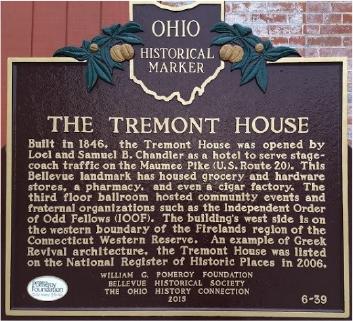
Our annual member dues are very reasonable and entitle you to receive our quarterly newsletter. The dues paid by our members in 2020 helped make the above-mentioned progress possible. But in 2021, we will need to raise a LOT of money if we want to open the Tremont House in time for the building’s 175th anniversary late in the year.
None of our volunteers – including board members – get paid.
For obvious reasons, the Society has to hire professionals to do some of the fabrication, construction and design, and we have been privileged to work with a number of area businesses who are as committed to creating a suitable home for the Bellevue Heritage Museum as our volunteers are.
Specifically – and these are very rough numbers – our building committee estimates we will need a MINIMUM of $120,000 just to open the ground floor as a museum. The projects listed on the next page are ABSOLUTELY ESSENTIAL for our work on the Tremont House to continue...
We need to raise …
- $15,000 for heating of first floor and ductwork for second floor (each floor will eventually have
- its own heating unit)
- $12,000 for electrical (cost will depend on number of outlets, lights, etc.)
- $ 4,500 for flooring on first floor
- $65,000 for fire protection system (suppression system, alarms)
- $ 7,500 for stairway
- $ 6,000 for drywall
- $10,000 for miscellaneous, overruns, etc.
These are rough estimates. And of course, they do not include our ongoing regular expenses for utilities and the like.
In short: After years of hard work by many people, we are SO close to opening our town’s history museum! How we look forward to sharing the memories and stories that the people of Bellevue have contributed in the form of photos and artifacts!
Bellevue is a special place, thanks to businesses and people like you that call it home. We love this town, which is why we are so passionate about preserving its history.
Whether you have lived in Bellevue all your life or are a to people like you! new resident, whether you are now settled here or somewhere else – in some way, you are part of Bellevue’s story. Perhaps your ancestors started out here or your business is here. Maybe you simply appreciate the uniqueness of buildings like the Tremont House.
Whatever your connection to Bellevue is, we thank you in advance for your 2021 membership contribution and – if you can – for considering a Tremont House sponsorship at whatever level is comfortable for you.
If you make a sponsorship pledge totaling $250 or more, you can pay in installments by December 31, 2021 if you choose. We just want to have some idea of your intentions for budgeting purposes.
Bottom line: It is your continued generosity that will enable the momentum to continue in 2021! Stay well and again – thank you!
Sincerely,
Board of Directors
Bellevue Historical Society
See here how to Donate or Become a Member.
How It All Began
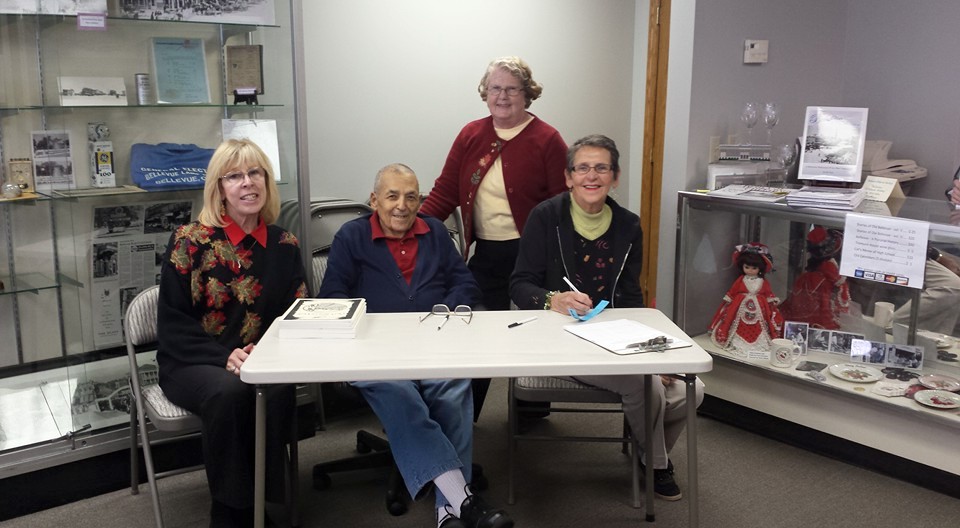 In the mid-1980's, a group of history loving Bellevue citizens, Bill Oddo and Gene Leonard among them, applied for incorporation in the State of Ohio as the Bellevue Heritage Museum and Society. Their goal was to preserve items pertaining to Bellevue's development and to promote interest in local history. A charter (#706297) was granted and a museum of Bellevue artifacts was opened at 115 S. Sandusky Street, Bellevue, Ohio / Huron County. In 1988, this organization was granted 501c(3) non-profit tax exempt status by the Internal Revenue Service.
In the mid-1980's, a group of history loving Bellevue citizens, Bill Oddo and Gene Leonard among them, applied for incorporation in the State of Ohio as the Bellevue Heritage Museum and Society. Their goal was to preserve items pertaining to Bellevue's development and to promote interest in local history. A charter (#706297) was granted and a museum of Bellevue artifacts was opened at 115 S. Sandusky Street, Bellevue, Ohio / Huron County. In 1988, this organization was granted 501c(3) non-profit tax exempt status by the Internal Revenue Service.
In the early 1990's, the museum was moved to 200 East Main Street. In 2000, the name of the organization was officially changed to the Bellevue Historical Society and  Heritage Museum which remains its formal name today. In 2002, the Society took a giant leap of faith and purchased the Tremont House at 101-103 East Main Street from the estate of Gene Leonard. 108 North West Street, the current office of the Society, was acquired in 2005. In 2006, most of the museum artifacts were placed in storage so that the funds of the Society could be devoted to the purchase of the Tremont House.
Heritage Museum which remains its formal name today. In 2002, the Society took a giant leap of faith and purchased the Tremont House at 101-103 East Main Street from the estate of Gene Leonard. 108 North West Street, the current office of the Society, was acquired in 2005. In 2006, most of the museum artifacts were placed in storage so that the funds of the Society could be devoted to the purchase of the Tremont House.
The Bellevue Historical Society is governed by a Board of Directors which consists of 7 to 10 citizens. Members of the Board are elected at the Society's annual meeting held each March. The Bellevue Historical Society is an all volunteer organization with no paid employees.
 Our Mission
Our Mission
The mission of the Society is to preserve the history of Bellevue, Ohio, for future generations through the preservation of historic buildings and artifacts pertaining to the growth and development of Bellevue, Ohio.
What Do We Do?
The Bellevue Historical Society:
- Helps and encourages young people, stimulating them to learn about their heritage
- Helps older people to recall the past by presenting programs of interest
- Presents programs on preservation and historical interest in the area
- Actively collects photos, documents, videos, artifacts, etc. regarding Bellevue, Ohio history and development
- Maintains an archive of material for the history of Bellevue, Ohio which will be prominently displayed in the future opening of the Tremont House Heritage Museum
The Society publishes a quarterly newsletter, The Tremont Trumpet, whose purpose is to inform members of Society activities as well as to add to their knowledge and enjoyment of Bellevue history. It is the desire of the Society to encourage local residents as well as visitors to Bellevue to appreciate this area's rich history and to enjoy learning about its development.
If you would like to become a member of Bellevue Historical Society, or would like more information, please click HERE to CONTACT US.
|
|
| |


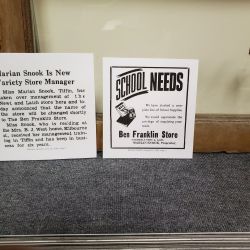
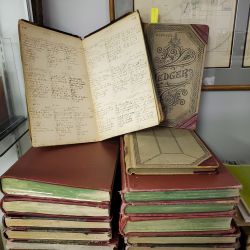
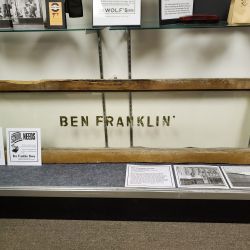

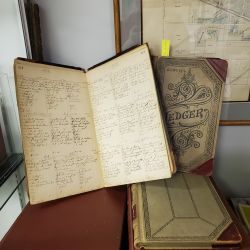


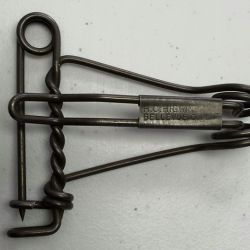


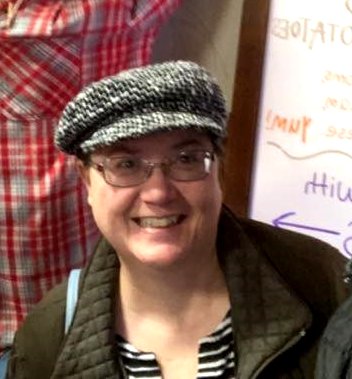
 Treasurer
Treasurer Secretary
Secretary
 Director
Director